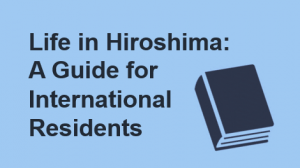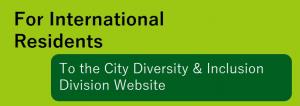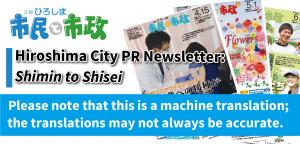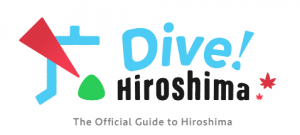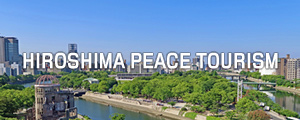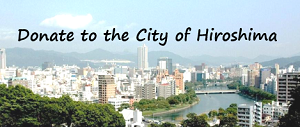本文
3. Important Paperwork | Life in Hiroshima 2023
| 2. Useful Information for Daily Life << | 3. Important Paperwork | >> 4. Support Services | ↑ Return to Contents |
3-1 Residency in Japan
The Residency Management SystemForeign nationals who will be in Japan mid to long term (more than three months) |
|
1) Residence Cards Residence Cards are issued when an individual is given permission (e.g. entry permission) related to their residency status. They contain information such as your name, date of birth, place of residence, nationality/region, residency status, and period of stay, as well as your photograph.
If your Residence Card is lost, stolen, or damaged beyond use, you must send an application to the Hiroshima Regional Immigration Bureau to have it reissued.
Note: If you lose your passport, first go to the police and get a Certificate of Lost Property (遺失届出証明書(遺失届) // Ishitsutodokede Shōmeisho). Take this certificate to your country’s embassy or consulate and ask for a new passport. 2) Necessary residency status paperwork (To be filed at the Hiroshima Regional Immigration Bureau) 1. When your name, date of birth, gender, nationality/region (etc.) changes, you must report the change within 14 days by submitting your passport, photograph, Residence Card, and documents that prove the change. 2. If you want to change your visa status, Designated Activities, or extend your period of stay, you must apply to do so. Take your passport, photograph, Residence Card, and necessary documents. Hiroshima Regional Immigration Bureau Address: 2-31 Kami-hatchobori, Naka-ku, Hiroshima Tel: 082-221-4412 |
Special Permanent ResidencyThe Special Permanent Residency system is different from the Residency Management System |
|
1) Special Permanent Resident Certificates Special Permanent Resident Certificates are issued to Special Permanent Residents. They contain information such as your name, date of birth, place of residence, nationality/region, and the certificate’s expiration date, as well as your photograph.
Those under the age of 16 who still have an Alien Registration Certificate should convert their certificate to a Special Permanent Resident Certificate before their 16th birthday.
If your Special Permanent Resident Certificate is lost, stolen, or damaged beyond use, you must apply at your local ward office to have it reissued. 2) Necessary paperwork for Special Permanent Residents(To be filed at ward or branch offices) 1. When your name, date of birth, gender, nationality/region changes, you must report the change within 14 days by submitting your passport (if you have one), photograph, Special Permanent Resident Certificate, and documents that prove the change . 2. When your Special Permanent Resident Certificate expires, you must apply for an extension by submitting your passport (if you have one), photograph, and Special Permanent Resident Certificate before the expiration date. |
|
The Special Re-Entry Permit System |
|
If a foreign resident whose passport and Residence Card are valid leaves Japan and plans to return within one year, they do not in principle need to apply for a Re-Entry Permit. If a Special Permanent Resident whose passport and Special Permanent Resident Certificate are valid leaves Japan and plans to return within two years, they do not in principal need to apply for a Re-Entry Permit. |
Inquiries
For more information about the Residency Management System and the System for Special Permanent Residents, please contact the Immigration Information Center.
Immigration Information Center
Opening hours: Monday to Friday, 8:30 am – 5:15 pm
Closed: Saturdays, Sundays, national holidays, and December 29 to January 3
Tel: 0570-013904
(From IP-phone, or overseas: (+81) (0)3-5796-7112)
3-2 Registering Your Address
Mid to long term residents and Special Permanent Residents must register as residents.
1) Initial resident registration (for mid to long term residents)
After finding a place to live, you need to notify the Citizens Affairs Division of your local ward office or branch office (see 7. Places to Get Useful Advice and Information) within 14 days. Remember to take your Residence Card with you.
If you haven’t received your Residence Card yet, take your passport instead.
2) Moving home (change of address)
1. If you leave Hiroshima City to move to another municipality, you must submit a Notification of Moving-Out (転出届//Tenshutsu Todoke) to the Citizens Affairs Division of your local ward office or branch office (see 7. Places to Get Useful Advice and Information) and receive a Moving-Out Certificate (転出証明書//Tenshutsu Shōmeisho). Be careful not to lose this certificate. After you move to your new home, you must submit a Notification of Moving-In (転入届//Tennyū Todoke) at the relevant office in your new municipality within 14 days of arrival. When submitting this notification, remember to bring the Residence Cards or Special Permanent Resident Certificates of all members of your household and the Moving-Out Certificate.
2. If you move within Hiroshima City, you must submit a Notification of Change of Address (転居届//Tenkyo Todoke) to the Citizens Affairs Division of your local ward office or branch office within 14 days. When submitting this notification, remember to bring the Residence Cards or Special Permanent Resident Certificates of all members of your household.
Resident Record (住民票//Jūmin Hyo)
Once you are registered as a resident, you will be able to receive a copy of your Resident Record.
If you would like to have a copy of your Resident Record, please apply at the Citizens Affairs Division of any local ward office or any branch office in Hiroshima City (see 7. Places to Get Useful Advice and Information).
Individual Number (My Number)
Those with a Resident Record also have a 12-digit Individual Number, known as “My Number”. Once you register as a resident, you will be sent an Individual Number Notification which contains your Individual Number.
Ask the Citizens Affairs Division of your local ward office or branch office (see 7. Places to Get Useful Advice and Information) for more information about making an Individual Number Card, a hard plastic card that shows your Individual Number and photograph.
Child Allowances (児童手当//Jidō Teate)
Child Allowances are paid to parents and guardians who are raising children up to the 3rd year of junior high school (until March 31 after the child’s 15th birthday). If you are entitled to child allowances, but are not receiving them or you have recently moved to Hiroshima City, please complete the necessary procedures and paperwork to receive this allowance. For further information, contact the Welfare Division of your local ward office and Information).
3-3 Births, Deaths, Marriages, and Divorces
It may be necessary to notify your home country if a child is born, if someone you are related to dies, or if you get married or divorced. Contact your home country’s embassy, consulate, or other permanent mission in Japan.
Please also notify your local ward office or branch office (see 7. Places to Get Useful Advice and Information), as well as the Hiroshima Regional Immigration Bureau.
1) Births
|
Notification |
|
Where to submit |
|---|---|---|
|
Notification of Birth (出生届// Shusshō Todoke) |
|
Local ward office Citizens Affairs Division or branch office in the ward where the child lives or was born |
|
Acquiring residency status paperwork |
|
Hiroshima Regional Immigration Bureau |
|
Permission related to Special Permanent Residency |
|
Local ward office Citizens Affairs Division or branch office |
|
Birth Report (出生連絡票//Shusshō Renraku Hyō) |
|
Local ward office Mutual Community Support Division or branch office |
|
Application for Child Allowance (児童手当//Jidō Teate) |
|
Local ward office Mutual Community Support Division or branch office (except for Ninoshima) |
|
Application for medical subsidies for children |
|
Local ward office Welfare Division or branch office |
|
Enrollment in National Health Insurance |
|
Local ward office National Insurance and Pension Division or branch office |
Note: Even if a child is born in Japan, if both the mother and father are foreign nationals, the child will not be granted Japanese citizenship. Contact your home country’s embassy or consulate to notify them of the child’s birth.
2) Deaths
|
Notification |
|
Where to submit |
|---|---|---|
|
Notification of Death (死亡届//Shibō Todoke) |
|
Local ward office Citizens Affairs Division or branch office of the ward in which the death occurred |
|
Notification of Death for National Health Insurance Purposes |
|
Local ward office National Insurance and Pension Division or branch office |
|
Changes in Long-Term Care Insurance (介護保険//Kaigo Hoken) |
|
Local ward office Welfare Division or branch office |
3) Marriages
|
Notification |
|
Where to submit |
|---|---|---|
|
Notification of Marriage (婚姻届//Konin Todoke) |
|
Local ward office Citizens Affairs Division or branch office Note: paperwork and procedures may differ depending on your nationality |
|
Changes in National Health Insurance |
|
Local ward office National Insurance and Pension Division or branch office |
|
Changes in Long-Term Care Insurance (介護保険//Kaigo Hoken) |
|
Local ward office Welfare Division or branch office |
4) Divorces
|
Notification |
|
Where to submit |
|---|---|---|
|
Notification of Divorce (離婚届//Rikon Todoke) |
|
Local ward office Citizens Affairs Division or branch office Note: paperwork and procedures may differ depending on your nationality |
|
Changes in National Health Insurance |
|
Local ward office National Insurance and Pension Division or branch office |
|
Changes in Long Term Care Insurance (介護保険//Kaigo Hoken) |
|
Local Ward office Welfare Division or branch office |
Registration of personal seals (印鑑//Inkan)
n Japan, seals engraved with your name (hanko or inkan) are used in the same way as signatures. Officially registered seals are called jitsuin (実印). The use of a registered seal along with its certificate of registration is legal confirmation of the intentions of its user.
To register a seal, take your seal and your Residence Card or Special Permanent Resident Certificate to the Citizens Affairs Division of your local ward office or branch office (see 7. Places to Get Useful Advice and Information).
Some seals cannot be registered. Contact the Citizens Affairs Division of your local ward office or branch office for details
3-4 Medical Insurance
Japan has public health insurance systems that can be used for medical care when a person becomes ill or injured. These systems are not just for the individual, but are in place to support us all. You should enroll into one of the following three systems:
1) Health Insurance
If you work at least 20 hours a week, earn more than 88,000 yen per month, and meet other set criteria, you will be enrolled in your employer’s health insurance plan.
If you have family that lives in Japan, they can also be enrolled in this health insurance. Ask your employer if you are eligible for health insurance.
2) National Health Insurance
People who have permission to live in Japan for over three months must enroll in Hiroshima City’s National Health Insurance. To enroll, visit the National Insurance and Pension Division of your local ward office (see 7. Places to Get Useful Advice and Information)or branch office.
However, the following people are not eligible to enroll in National Health Insurance:
1. Those who have come to Japan with a “Designated Activities” visa and are one of the following: a) have come for medical care or similar activities, or to provide daily care for someone doing this, or b) have come for sightseeing or other recreational activities or are the spouse accompanying someone doing this.
- : If your residence status is “Designated Activities,” you must submit documentation confirming your designated activities when you enroll.
2. Those enrolled in their employer’s medical insurance.
3. Those enrolled in Late-Stage Elderly Medical Care.
4. Those who receive public welfare (生活保護//Seikatsu Hogo).
5. Those who receive benefits for Japanese war orphans left in China.
-
6. Those from a country with a social security agreement with Japan that covers healthcare and who have a government-issued certificate of being covered by their country’s social security.
3) Late-stage Elderly Medical Care
If you are either of the following, you are eligible Late-stage Elderly Medical Care (後期高齢者医療制度//Kōki Kōreisha Iryō Seido):
1. Those aged 75 or older.
-
2. Those aged 65 to 74 who are certified as having a disability of severity stipulated by the Hiroshima Prefecture Elderly Medical Care Extended Association. For information regarding certification procedures, contact the Welfare Division of your local ward office (see 7. Places to Get Useful Advice and Information) or branch office.
However, if you are any of the following, you are not eligible for Late-Stage Elderly Medical Care:
-
Those whose residency permission is for less than three months (unless the Hiroshima Prefecture Elderly Medical Care Extended Association has recognized that you will stay for more than three months).
-
Those whose status of residence falls under “Designated Activities” and engage in the
following activities:
・ Medical stay
・ Accompanying companions taking care of the daily needs of those receiving medical treatment
・ Tourism, recuperation, and other similar activities
・ Accompanying spouses of those engaging in activities related to tourism, recuperation, and other similar activities
Note: Those whose status of residence falls under "Designated Activities" are required to
present an official document indicating the nature of their activities.
-
Those receiving public welfare.
-
Those receiving benefits for Japanese war orphans left in China.
4) Going to the hospital
When you go to a medical facility, present your medical insurance card at the reception desk. You may also use your Individual Number Card in place of your medical insurance card at hospitals equipped with card readers. Those who wish to do so will have to register their card as a medical insurance card beforehand.
You will be liable to pay between 10-30% of medical fees (depending on your age and income). If you receive treatment as an inpatient, it is your responsibility to pay for any meal charges (etc.).
5) Births and deaths
When an insured person gives birth or dies, you may be entitled to receive money. For further information, contact:
-
The National Insurance and Pension Division of your local ward office (see 7. Places to Get Useful Advice and Information) or branch office for inquiries regarding Hiroshima City’s National Health Insurance.
-
Your local ward office’s Welfare Division (see 7. Places to Get Useful Advice and Information) or branch office for inquiries regarding the Late-stage Elderly Medical Care system.
Medical subsidies
If you are enrolled in medical insurance and if any of the following apply, you may be eligible for medical subsidies. For more information, contact the respective divisions of your local ward office (see 7. Places to Get Useful Advice and Information).
-
Those raising a child aged zero to 3rd year of junior high school (eligible until March 31 following the child’s 15th birthday) – Welfare Division
-
Those raising a child alone (eligible until March 31 after the child’s 18th birthday) – Welfare Division
-
Those with mental or severe intellectual/physical disabilities. – Welfare Division
-
When high medical expenses are incurred – National Insurance and Pension Division
6) Insurance payments
If you are enrolled in medical insurance, you must pay insurance premiums. These premiums are based on factors, such as your income.
3-5 Long-Term Care Insurance
Long-Term Care Insurance (介護保険//Kaigo Hoken) covers the necessary care services for insured people who require constant care because they are bedridden, have dementia, or for other similar reasons.
1) Eligibility
If all of the following apply, you should enroll in the City of Hiroshima’s Long-Term Care Insurance:
-
You live in Hiroshima City.
-
You plan on staying in Japan for more than three months, and have the appropriate visa to do so. However, you are not eligible if you have come to Japan with a “Designated Activities” visa and are one of the following: a) have come to Japan for medical care or similar activities, or to provide daily care for someone doing this, or b) have come to Japan for sightseeing or other recreational activities, or are the spouse accompanying someone doing this.
-
You are aged 40 or older.
If you are aged between 40 and 64 you must also enroll in Japanese Public Medical Insurance.
If you are 65 years or older, the City of Hiroshima will send you a Long-Term Care Insurance Card.
2) If you want to use Long-Term Care services
First, apply to be certified as needing long-term care at your local ward office Welfare Division or branch office (see 7. Places to Get Useful Advice and Information).
Those who have been certified as needing long-term care or long-term support can use services covered by Long-Term Care Insurance.
However, available services depend on the level of care needed. When you use Long-Term Care services, you must pay between 10-30% (depending on your income) of the costs.
There are some services that can be used by people who are not certified as needing long-term care or support.
For more information, contact your local ward office Welfare Division (see 7. Places to Get Useful Advice and Information).
3) Insurance payments
If you are enrolled in Long-Term Health Insurance, you must pay insurance premiums. The insurance premium for people 65 and older is determined by their income (etc.). The insurance premium for people aged 40 to 64 is calculated as a portion of the insurance premiums of the medical insurance in which they are enrolled.
3-6 Pensions
As a general rule, everyone living in Japan aged 20 to 59 must enroll in National Pension (国民年金//Kokumin Nenkin). If you work for a company (etc.), you will also be enrolled in Employee Pension Insurance (厚生年金//Kōsei Nenkin).
1) How to enroll
Enroll in National Pension at the National Insurance and Pension Division of your local ward office or branch office (see 7. Places to Get Useful Advice and Information).
However, those enrolled in Employee Pension and spouses supported by those enrolled in Employee Pension should file paperwork at their own or their spouse’s place of employment.
2) National Pension payments
If you are enrolled in National Pension, you must pay the insurance premium. If it is difficult for you to pay the premium because of reasons such as financial problems, you can apply for partial or total exemption from premiums. For further information, contact the National Insurance and Pension Division of your local ward office or branch office (see 7. Places to Get Useful Advice and Information).
3) Types of pension payments
|
Pension |
Who’s Eligible |
|---|---|
|
Basic Pension for the Elderly |
Paid to people 65 or older who have been enrolled in a public pension for a total of ten years or longer (including periods of time it was deemed by a government office that they did not need to pay insurance premiums). |
|
Basic Pension for the Disabled |
Paid to people enrolled in National Pension who become ill or injured to a certain degree. |
|
Basic Pension for the Bereaved |
People who died while enrolled in National Pension; either paid to their spouse (if their spouse was their dependent and is now taking care of a child or children) or to the deceased’s dependent child or children. |
To be entitled to the Basic Pension for the Disabled or the Basic Pension for the Bereaved, you need to fulfill certain payment-related criteria.
For further information, contact the National Insurance and Pension Division of your local ward office or branch office (see 7. Places to Get Useful Advice and Information).
Note: The Ninoshima Branch Office does not deal with pensions.
4) Lump-Sum Withdrawal (refunding your pension)
If you leave the National Pension system, you may be eligible to receive a Lump-Sum Withdrawal (脱退一時金//Dattai Ichiji Kin). You must fulfill all of the following criteria and apply within two years after leaving Japan. The sum you receive will be determined on how long you paid insurance premiums.
-
Those without Japanese nationality.
-
Those who have paid National Pension premiums for six months or longer.
-
Those without an address in Japan.
-
Those who never had the right to receive pension payments (including disability allowance).
After leaving Japan, mail the following to Japan Pension Service: 1) a Request for Lump-Sum Withdrawal Form (脱退一時金請求書//Dattai Ichiji Kin Seikyūsho); 2) documents that confirm your basic pension number (for example, your pension book or Basic Pension Number Notice); 3) photocopies of the pages in your passport that show your name, date of birth, nationality, signature, and residency status; 4) documents that indicate the name of your bank and bank account number (etc.).
Japan Pension Service
Address: 3-5-24 Takaido-nishi, Suginami-ku, Tokyo 168-8505
Tel: 0570-05-1165 (for calls made within Japan)
+81-3-6700-1165 (for calls made from outside of Japan)
3-7 Tax
1) Japanese taxes
Taxes in Japan include national taxes collected by the national government and local taxes collected by prefectural and municipal governments.
|
National Tax |
Income tax, corporate tax, inheritance tax, consumption tax |
|
|
Local Taxes |
Prefectural Taxes |
Prefectural residents tax, automobile tax, local consumption tax |
|
Municipal Taxes |
Municipal residents tax, property tax, light vehicle tax |
|
Note: For inquiries about national taxes or prefectural taxes, contact the National Tax Agency or a prefectural taxation office respectively.
2) Income Tax
Those who have sources of income, such as paychecks, are required to pay income tax. The amount payable is determined by the amount of income received during a one-year period between January 1 and December 31.
There are two methods of paying income tax:
1. Tax withholding
The amount of tax payable is deducted from your income and paid monthly to the government by your employer (this is known as tax withholding). A year-end tax adjustment will be performed every December to determine whether you have overpaid or underpaid your taxes from January to November. If you had overpaid, the surplus will be added to your paycheck for December.
2. File a tax return
If you do not have an arrangement with your employer to perform tax withholding or a year-end tax adjustment, you will have to file a tax return by yourself. To file your tax return for the year you have worked, submit the necessary documents to the tax office of your local ward between February 16 and March 15 of the following year. You may make payments at convenience stores, banks, post offices, or online.
3) Residents Tax (Individual Municipal Residents Tax and Prefectural Residents Tax)
1. What is Residents Tax?
Individual Municipal Residents Tax (市民税//Shiminzei) and Prefectural Resident Tax (県民税//Kenminzei) are collectively known as Residents Tax (住民税//Jūminzei), and are paid together.
|
Individual Municipal Residents Tax + Individual Prefectural Residents Tax = Residents Tax |
Residents Tax is paid by everyone who has an address in Japan as of January 1 of that year and who earned an income the previous year. The amount of Residents Tax you pay is made up of a flat rate (均等割//Kintō Wari) and a rate based on your income from the previous year (所得割//Shotoku Wari).
|
Residents Tax = Flat rate + Rate based on your income from the previous year |
For more information, see the City of Hiroshima website (https://www.city.hiroshima.lg.jp/soshiki/26/199970.html) or contact the Municipal Resident Tax Section of the tax office or tax room in charge of your local ward (see page 40).
2. How to pay your taxes
There are two methods of paying tax:
1. Your employer subtracts the amount of tax you owe from your income and pays it to the City.
2. You pay taxes by yourself. The City will send a notification to those paying via the ordinary collection method; confirm the contents of the notification and pay your tax by the due date at convenience stores, banks and post offices, etc. You may also pay your Municipal Residents Tax online with a credit card or a smartphone payment app.
3. What happens if you don’t pay your taxes?
If you do not pay your taxes by their due date, you will be required to pay not only the taxes you should have paid, but also late payment charges. The City may also take proceedings against you for the recovery of unpaid taxes by seizing possessions, including your salary. Pay your taxes by the due date to avoid this.
For further information, see the City of Hiroshima’s website https://www.city.hiroshima.lg.jp/site/english/18862.html, or contact the relevant division of the Payment Department that deals with your ward (see page 40).
Income Tax Convention
If your home country is part of the Income Tax Convention (a formal agreement between countries covering tax issues) with Japan and you are an exchange student or vocational trainee (those undertaking training in a company/private sector) etc., you might be exempted from income tax and/or residents tax. You must fulfill certain criteria to be exempted, and you must apply separately for exemption from income tax and residents tax. Please be aware that you cannot be exempted from residents tax if you only apply for income tax exemption.
4) Automobile Tax
The amount of tax payable will depend on the following factors:
1. Environmental performance
Taxes related to environmental performance are often paid in addition to what the car costs when purchasing a car.The amount payable depends on the type of car purchased and other factors.
2. Vehicle type
Taxes related to vehicle type are to be paid by the car owner on April 1 of each year. The amount of tax levied is calculated based on the engine displacement of your car.
Engine displacement > 660cc – Vehicle Tax
Engine displacement ≦ 660cc – Light Vehicle Tax
The tax notice will be sent to you by the City or the prefectural office around April or May of each year. The notice will indicate the payment due date and amount of tax payable, which depends on the type of car you own and other factors. You can make payment at convenience stores, banks, post offices, or online by the indicated due date. You may also pay by credit card or via smartphone payment apps.



